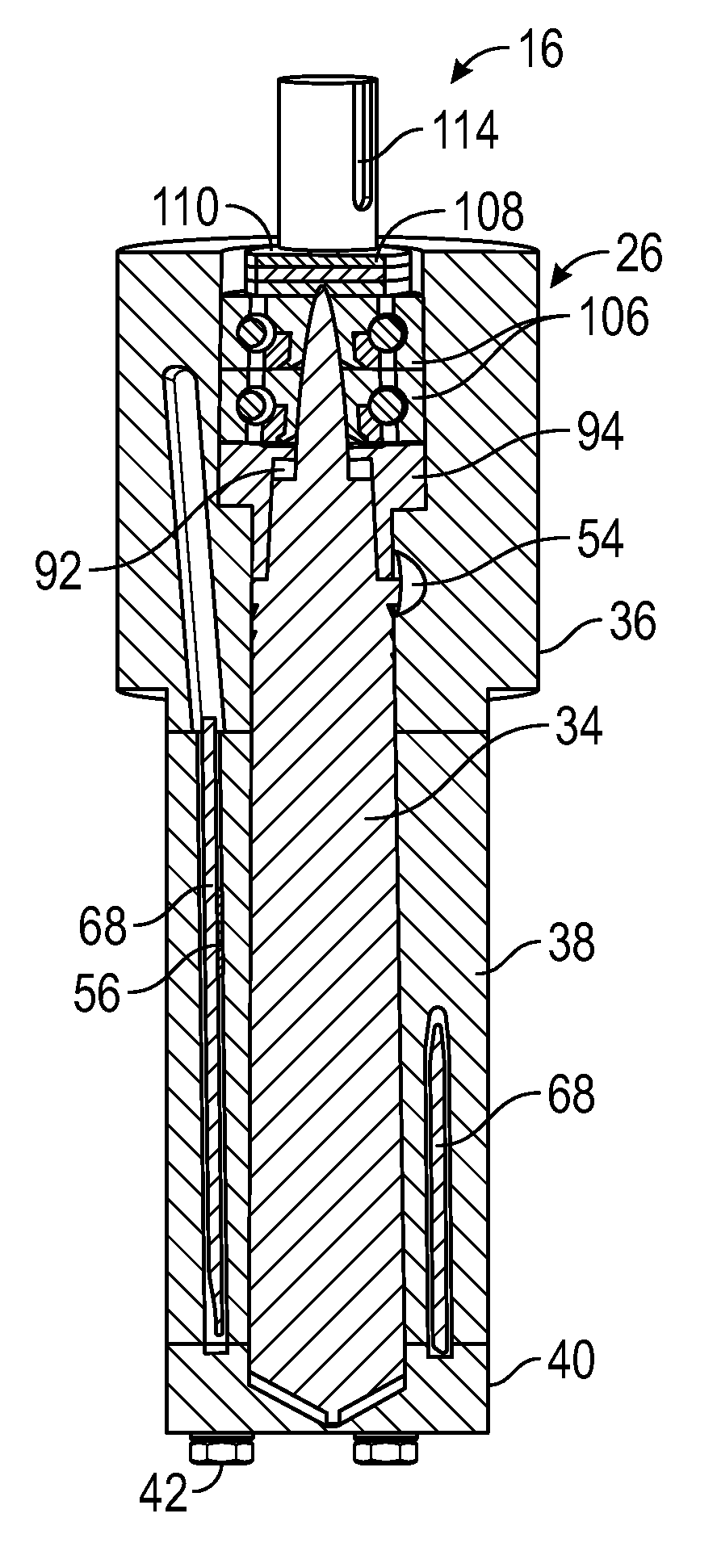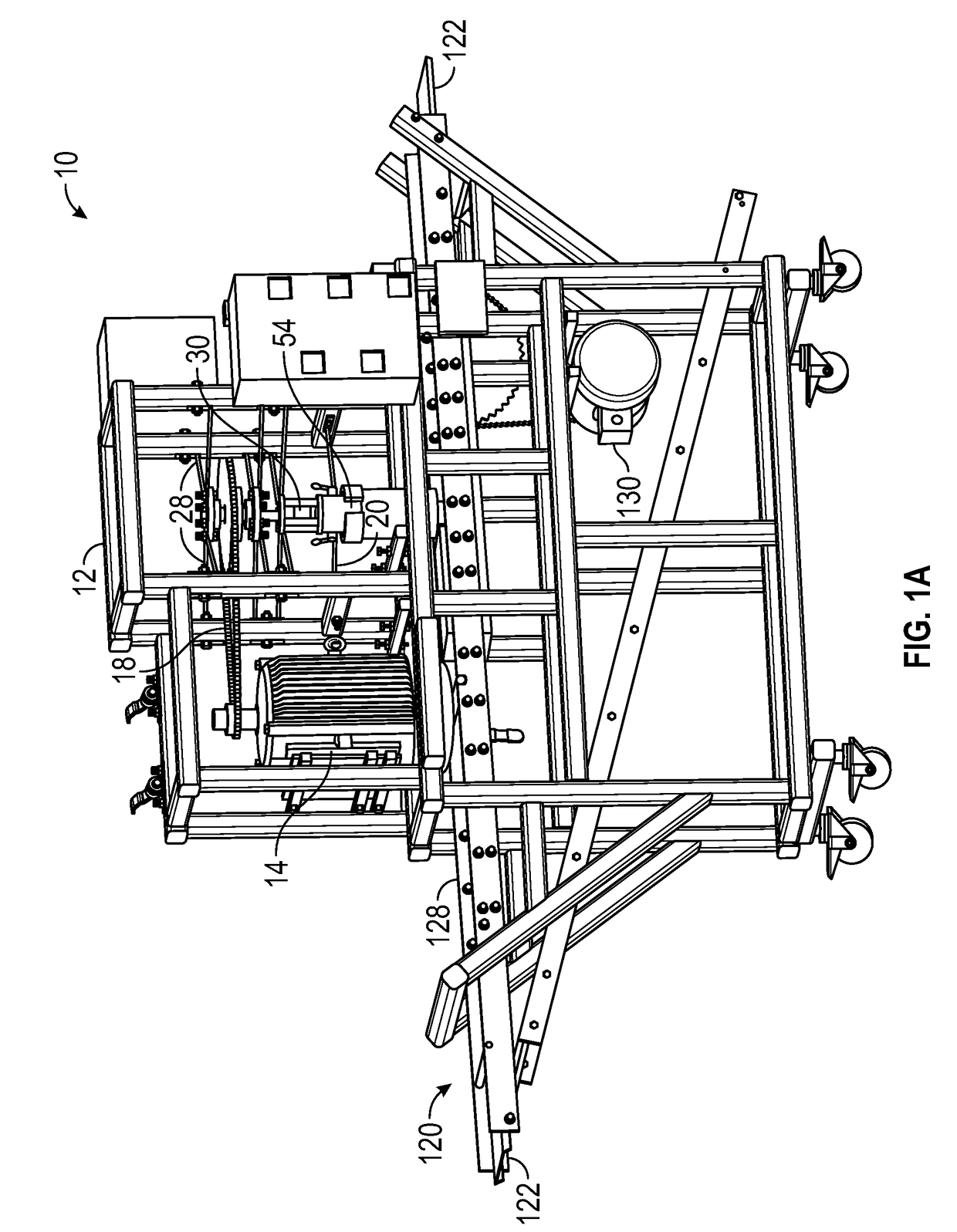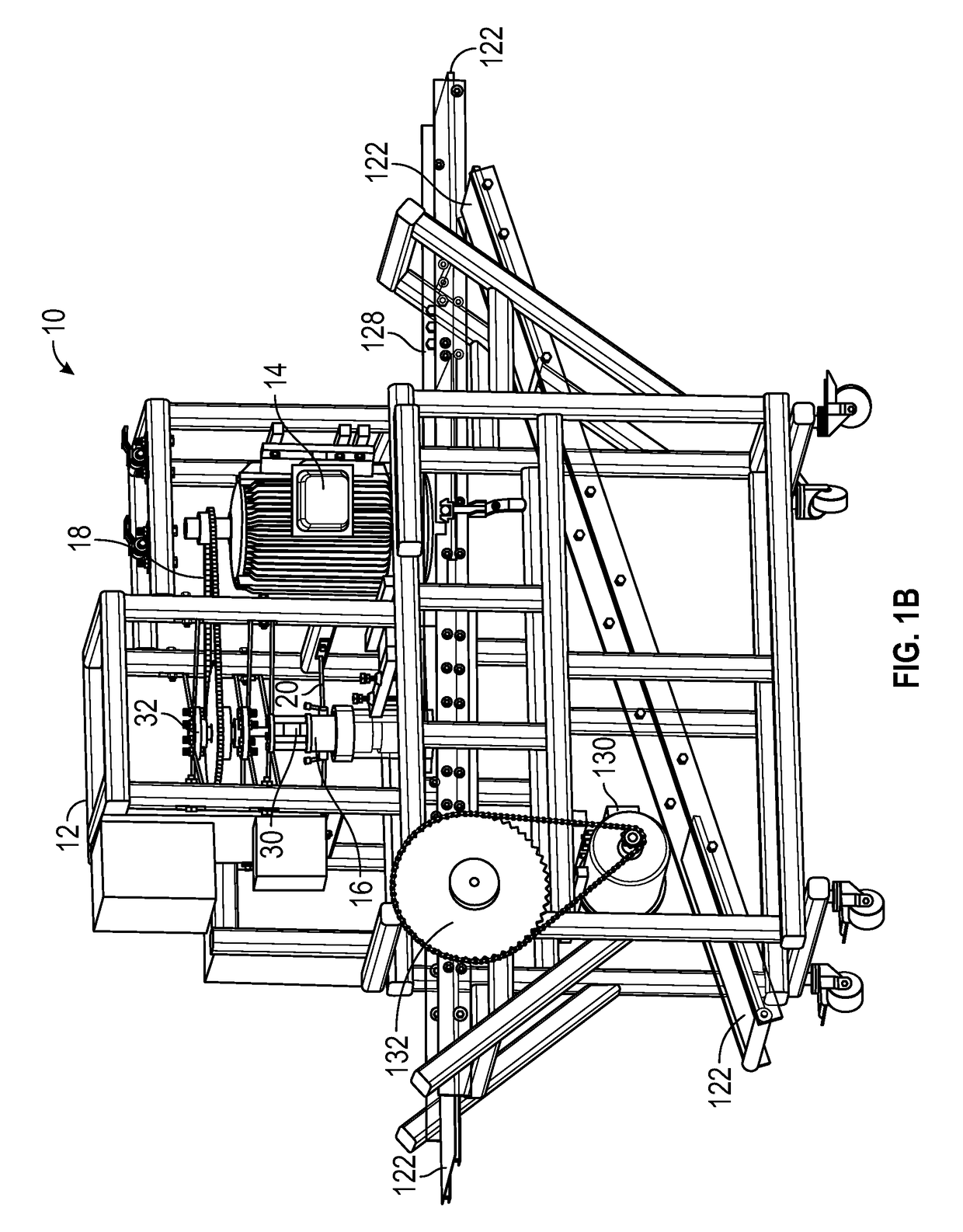High Shear Thin Film Machine For Dispersion and Simultaneous Orientation-Distribution Of Nanoparticles Within Polymer Matrix
a nanoparticle and polymer matrix technology, applied in the direction of mixing, transportation and packaging, rotary stirring mixers, etc., can solve the problems of poorer performing systems, agglomeration of harnps reduces the effective aspect ratio of nanoparticles and available surface for interaction, and most polymer matrices and nps are not compatible with each other, so as to improve or overcome the deficiencies of the art
- Summary
- Abstract
- Description
- Claims
- Application Information
AI Technical Summary
Benefits of technology
Problems solved by technology
Method used
Image
Examples
Embodiment Construction
[0077]FIGS. 1A, 1B, 2A and 2B illustrate a high shear thin film machine 10 in accordance with an exemplary embodiment of the present disclosure. The machine 10 includes a frame 12 upon which the components of the machine 10 are mounted. The present disclosure, however, contemplates that the components may be installed on any suitable structure or surface to achieve the objects of the invention.
[0078]A motor 14 mounted on the frame 10 is operably connected to a mixer 16. A preferred embodiment includes a high horsepower electric motor, but the present disclosure contemplates the motor 14 may be powered by petrochemical, solar, stream, and the like. In the exemplary embodiment depicted in FIG. 1, the motor 14 is connected to the mixer 16 through a chain 18. The present disclosure envisions other means of connection, including belts, cables, gear box, and the like. In an alternate embodiment, the output shaft of the motor 14 may be coupled directly to the mixer 16, thereby eliminating ...
PUM
| Property | Measurement | Unit |
|---|---|---|
| Angle | aaaaa | aaaaa |
| Angle | aaaaa | aaaaa |
| Flow rate | aaaaa | aaaaa |
Abstract
Description
Claims
Application Information
 Login to View More
Login to View More - R&D
- Intellectual Property
- Life Sciences
- Materials
- Tech Scout
- Unparalleled Data Quality
- Higher Quality Content
- 60% Fewer Hallucinations
Browse by: Latest US Patents, China's latest patents, Technical Efficacy Thesaurus, Application Domain, Technology Topic, Popular Technical Reports.
© 2025 PatSnap. All rights reserved.Legal|Privacy policy|Modern Slavery Act Transparency Statement|Sitemap|About US| Contact US: help@patsnap.com



